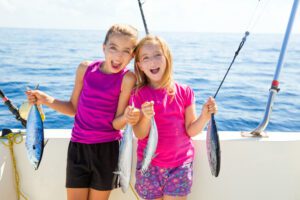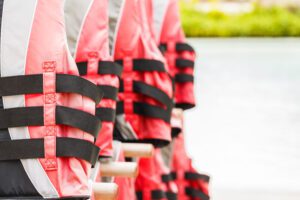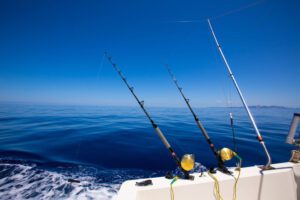 Summer is among the most popular times to get out on the boat and go fishing. Generally, the weather is more conducive to spending the day outside than other times of year, especially up here in Maine. However, some days the sun just burns a little bit brighter than usual, and some precautions are necessary. Here’s are some tips to stay safe and fish productively on those sweltering summer days:
Summer is among the most popular times to get out on the boat and go fishing. Generally, the weather is more conducive to spending the day outside than other times of year, especially up here in Maine. However, some days the sun just burns a little bit brighter than usual, and some precautions are necessary. Here’s are some tips to stay safe and fish productively on those sweltering summer days:
Hydrate and Prepare
On the hottest of days, it might be tempting to guzzle a soda or a beer, if you’re of age. But those kinds of drinks can make you even more dehydrated. Stick to water or electrolyte-replenishing drinks like Gatorade.
Additionally, it’s important to wear sunscreen if you’re going to be out in the sun and to reapply if you’ll be out for a while. It’s also wise to wear a hat and sunglasses to protect those parts of your body.
Avoid the Worst of the Heat
The afternoon tends to be the hottest and sunniest part of the day. If you’re planning on fishing on a day where the temperature is expected to be quite higher than normal, aim to arrive very early in the morning or in the late afternoon. Not only will you avoid the heat, but the fish will likely be more active as well.
Find the Right Spot
When the temperature is hot enough to affect you, it’s likely bothering the fish as well. They will likely look for an area to cool off, and that’s where you’ll find them. If there is any shade in the lake or river you’re fishing in, there’s a good chance some fish have congregated there. You should also look for a current as that’s essentially the equivalent to a fan for fish. It’s also worth remembering that the water will get cooler the further away it is from the surface. Consider dropping your line lower to find fish that have migrated down.
If you’re looking for a fishing adventure this summer, Morning Flight Charters in Portland, Maine is perfect for you. We offer guided fishing trips, including deep sea fishing, family fishing, shark fishing and more. Call us at 207-831-2426 to set up your dream fishing trip.
 Fishing is a rewarding experience that millions of people look forward to each year. Shark fishing is one of the more exciting and challenging ways to spend a day out on the water.
Fishing is a rewarding experience that millions of people look forward to each year. Shark fishing is one of the more exciting and challenging ways to spend a day out on the water. Should you be considering heading out on a fishing charter this spring, you’ll want to make sure you’re as prepared as possible to have a successful time on the water.
Should you be considering heading out on a fishing charter this spring, you’ll want to make sure you’re as prepared as possible to have a successful time on the water. If you’re in the initial stages of planning an upcoming fishing trip and are unsure where to begin, it may be in your best interest to consider a
If you’re in the initial stages of planning an upcoming fishing trip and are unsure where to begin, it may be in your best interest to consider a 




